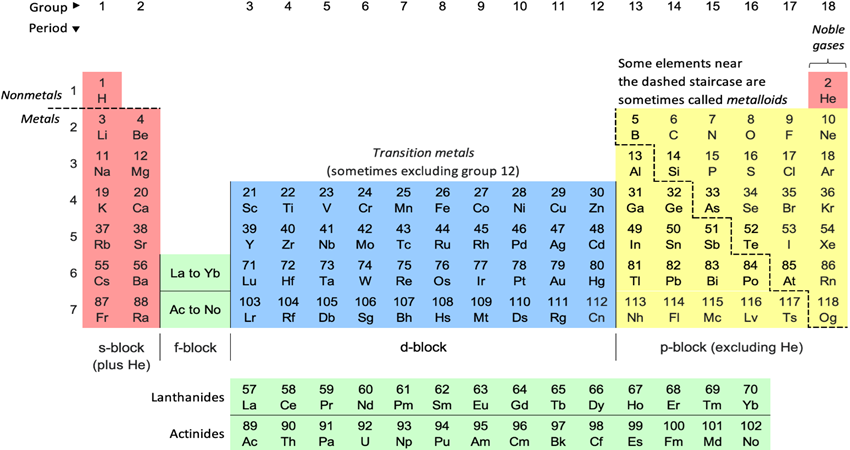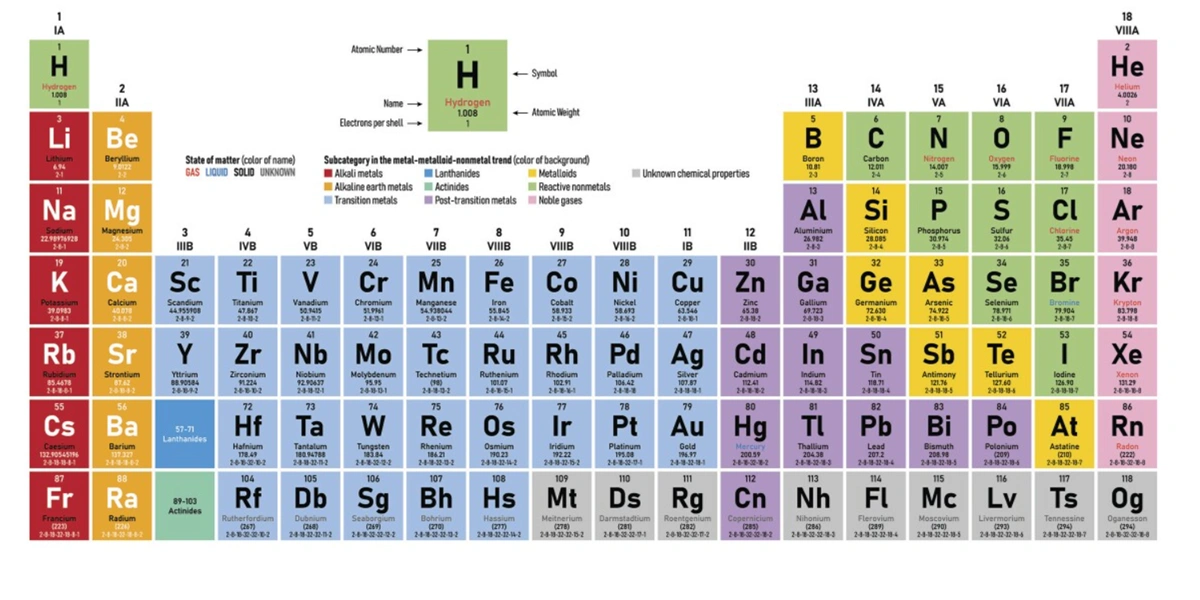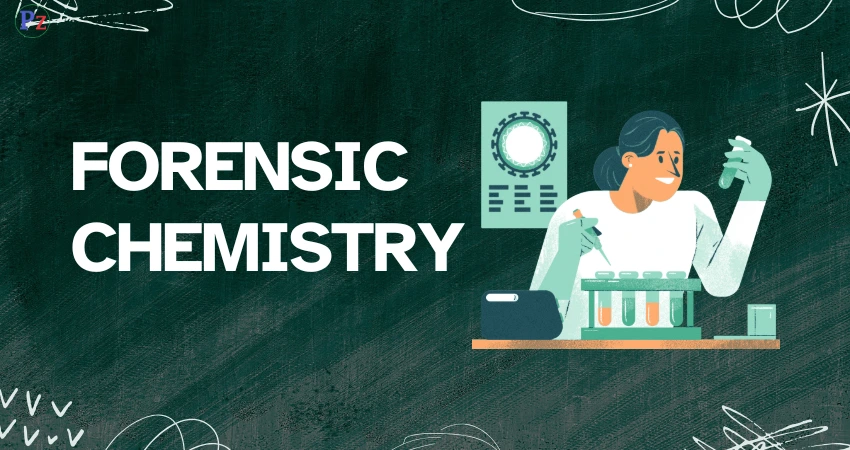The periodic table is an important basic tool in chemistry, categorizing 118 recognized elements based on their proton numbers, automatic arrangements, periodic arrangements, and chemical behavior. It is a table of elements and an insight into composition arrangements and cosmic behavior at the molecular scale.
From the most elementary element, H2, to the highest atomic level, oganesson, the periodic chart gives a model for understanding the universe’s complexities. In this article, you will learn about the importance of the periodic table, its important historical factors, and categorizing structure from hydrogen to oganesson.
History of the Periodic Table
In 1969, Russian chemist Dmitri Mendeleev first presented the periodic table theory. The scientist classified chemical elements according to their nucleon weight and identified periodic specific characteristics. This supported Mendeleev’s prediction of the presence and characteristics of unknown elements, a revolutionary revelation in that era.
His chart was later improved by identifying nuclear numbers, the number of nuclear charges in an atomic nucleus. This prediction resulted in the updated periodic table model, in which chemical elements are categorized based on proton count rather than atomic weight.
The Start of the Periodic Table
Hydrogen to Helium
Hydrogen (H) is the primary lament of the periodic chart. It is a simple yet important element. Hydrogen contains only one proton and one electron and is the most common universal chemical, accounting for about 75% of common matter. It is an essential element of stars and is important for creating molecules, including water, which is the basis of life.
Helium (He) is the secondary element of the periodic chart and is an inert gas having two positive subatomic particles (Protons) and negative subatomic particles (Electrons). It is singular, and the strongest atomic bond of an element makes it highly stable. Helium is widely applied in different applications, including refrigeration science, and is the second most common atom in the universe, created mainly in stars.
Exploring the Periodic Table: Groups and Periods
When we explore the periodic table, we encounter different elemental groups and periods that organize elements according to their mutual traits. All groups consist of elements with shared chemical characteristics because of their similar atomic configurations.
Elements of Group 1, called the alkali group, are intensely reactive. Examples include lithium (Li), sodium (Na), and potassium (K). Metallic elements generally shed one negative charge to create positive ions that make them very reactive with water and oxygen. The Group 17 elements include halogens like fluorine (F) and chlorine (Cl), which are highly reactive nonmetals that create ionic compounds (Salts) when reacting with metals.
On the other hand, Group 18 elements consist of noble gases like neon (Ne) and argon (Ar), which are non-reactive as they have full electron shells. This makes them highly stable and non-reactive, which is why they are commonly used in lighting and as inert gases in different commercial uses.
-
Transition Elements and Lanthanides/Actinides
Among the central groups are the transitional elements, founded in Groups 3-12. These chemical elements, including iron (Fe), copper (Cu), and gold (Au), are recognized for their potential to create multiple oxidation numbers, which makes them important in catalysis reactions, electrical systems, and manufacturing.
Exploring the Heaviest Elements: Starting with Oganesson
The outermost part of the periodic table includes oganesson (Og), the 118th element, named for Russian scientist Yuri Oganessian. Oganesson is one of the most massive substances ever produced. It is highly volatile, remaining only for brief moments before decomposing. Oganesson is included in a group of inert gases, although its traits might differ from those of less massive inert gases because of relativistic impacts.
The formation of such massive compounds challenges the limits of chemical science and physics. On the other hand, oganesson is not found naturally and is created in laboratories. It supports scientists exploring the interactions that bind atomic nuclei and investigating periodic charts’ boundaries.
The periodic table is an essential resource that helps us learn about different elements, from the smallest, hydrogen, to the most massive, oganesson. It not only provides an organized method for arranging substances based on their atomic formation but also reveals information about their chemical characteristics and interactions.
From the highly reactive alkali metals to the stable noble gases, the periodic chart demonstrates the intricacy and beauty of nature’s fundamental components. Understanding this chart is crucial for anyone fascinated by chemistry, physics, or the physical world, as it forms the basis of modern science and technology.






